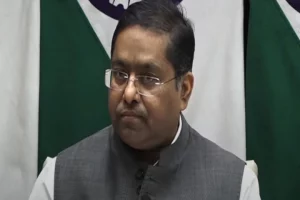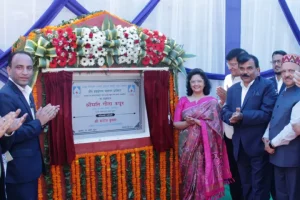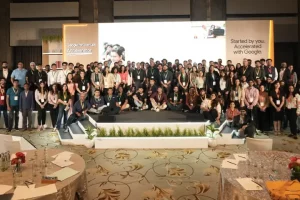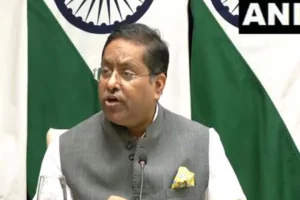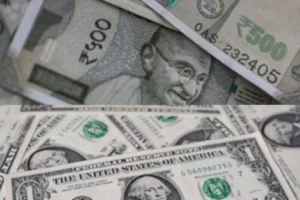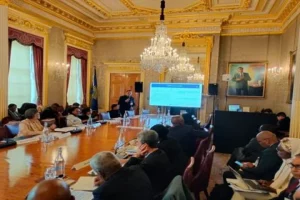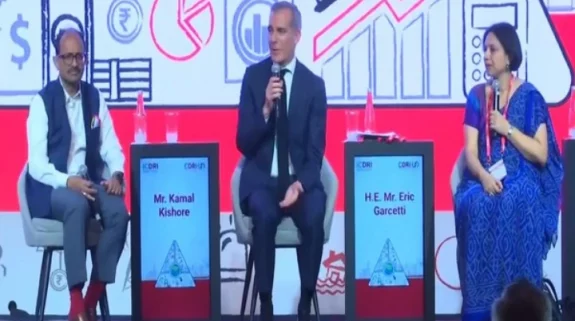Atul Aneja and Mahua Venkatesh
Describing Finance Minister Nirmala Sitharaman’s Union Budget as a landmark one that will help India achieve its growth potential, Niti Aayog vice chairman Rajiv Kumar said that the Indian economy is well on track to touch the $5 trillion mark, despite the Covid 19 pandemic. Kumar, however, underlined that despite the challenges that have come up in the wake of the pandemic, India must aggressively bring in reform measures through active consultations.
“All reforms in our country require and must require active and widest possible stakeholders’ consultations and awareness …the era of reform by its stealth is over or reform by executive fiat is over,” Kumar said, adding that the process of development has to be turned into a “Jan Andolan” or a mass movement.
“The PM has always insisted that development has to be a Jan Andolan, everybody must finally get involved in the development process of the country… of which reforms are a necessary part.. this is where we have to move,” he said.
Kumar said that Niti Aayog will do its bit in building the required awareness. “Niti Aayog will ensure that people are aware of what is being done and what is in it there for them. Of course there are winners and losers in every reform. Those who don’t directly benefit will have to be listened to, consulted and satisfied,” he said.
On the current impasse over the proposed reform process in the farm sector, he said that wide consultations had been held in and outside Parliament and besides most political parties had even taken up the issue in their election manifesto.
On $5 trillion economy
Kumar said that the Indian economy is well poised to touching the $5 trillion mark despite severe disruptions caused by the Covid 19 pandemic.
“A $5 trillion economy, India will achieve in any case, the question is how quickly… now we lost some years, therefore the real target will slip but we will achieve it latest by the year of end of 2025,” Kumar said.
The Niti Aayog chief also said that the structural reforms proposed in the Union Budget will go a long way in boosting the economy. Enhancement of the foreign direct investment (FDI) limit from 49 per cent to 74 per cent in the insurance sector, privatisation of public sector banks and listing of Life Insurance Corporation (LIC) of India
LIC along with the introduction of the production linked incentive (PLI) scheme will boost growth while generating employment.
Privatisation of two public sector banks and one general insurance company and the listing of LIC will make the government owned banks more efficient.
Focus on manufacturing with PLI scheme
The PLI scheme will enable India becoming a “China plus 1” in the manufacturing sector, Kumar pointed out.
However, he also said with the thrust on ‘minimum government and maximum governance’ the Centre will essentially play the role of a facilitator in creating a conducive business environment for the private sector to operate, which in turn will create job opportunities.
India will not turn into a centrally planned economy, Kumar said. “Let’s rely on demand and supply condition of the different sectors,” he said adding that the PLI scheme announced for 13 sectors will help in creating the necessary environment.
While presenting the Union Budget, Sitharaman announced spending of Rs 1.97 lakh crore on various PLI schemes over the next five years. This amount is in addition to the Rs 40,951 crore that was rolled out for the PLI scheme for electronic manufacturing schemes.
Sitharaman also announced setting up of seven textile parks in the next three years in addition to the Rs 10,683-crore PLI scheme for technical textiles and manmade fibre. The parks, with world class infrastructure and plug and play facilities, will to be set up over 1,000 acres of land.
On exports
The Niti Aayog chief underlined the need to focus on expanding India’s share in the global exports market.
“It is very important for us to ensure that we have a very coherent and aggressive export strategy for goods, services and some commodities as well and for agro-products,” Kumar said. He noted that external demand will be one of the main drivers of domestic growth in the country.
“We have to get our act together.. China today has 15 per cent (in the global exports market) and we were together, we were the same in 1991,” he said.
He pointed out with less than 2 per cent of share in world’s goods markets and about 3 per cent share in services market, India is not likely to be affected by downturns.
Kumar said that India despite pulling out of the Regional Comprehensive Economic Partnership (RCEP) is open to enter trade agreements. However, the agreements and trade deals must serve India’s national interest.
India will enter trade deals “at our timing and at our interest.” “All the (trade) blocks are very welcome, they are welcome but not on terms which do not suit our national interest,” he said, adding that India’s level of preparedness will also be crucial.
On alternative supply chain
Kumar said that several Japanese and Taiwanese companies are looking to set up manufacturing facilities in India to “de-risk” their operations. He also said that there is a greater need to connect with Taiwan in the present context.
“Those who are moving out of China are being invited here,” Kumar said, adding that the definition of micro small and medium enterprises (MSME) has been changed for this purpose.







